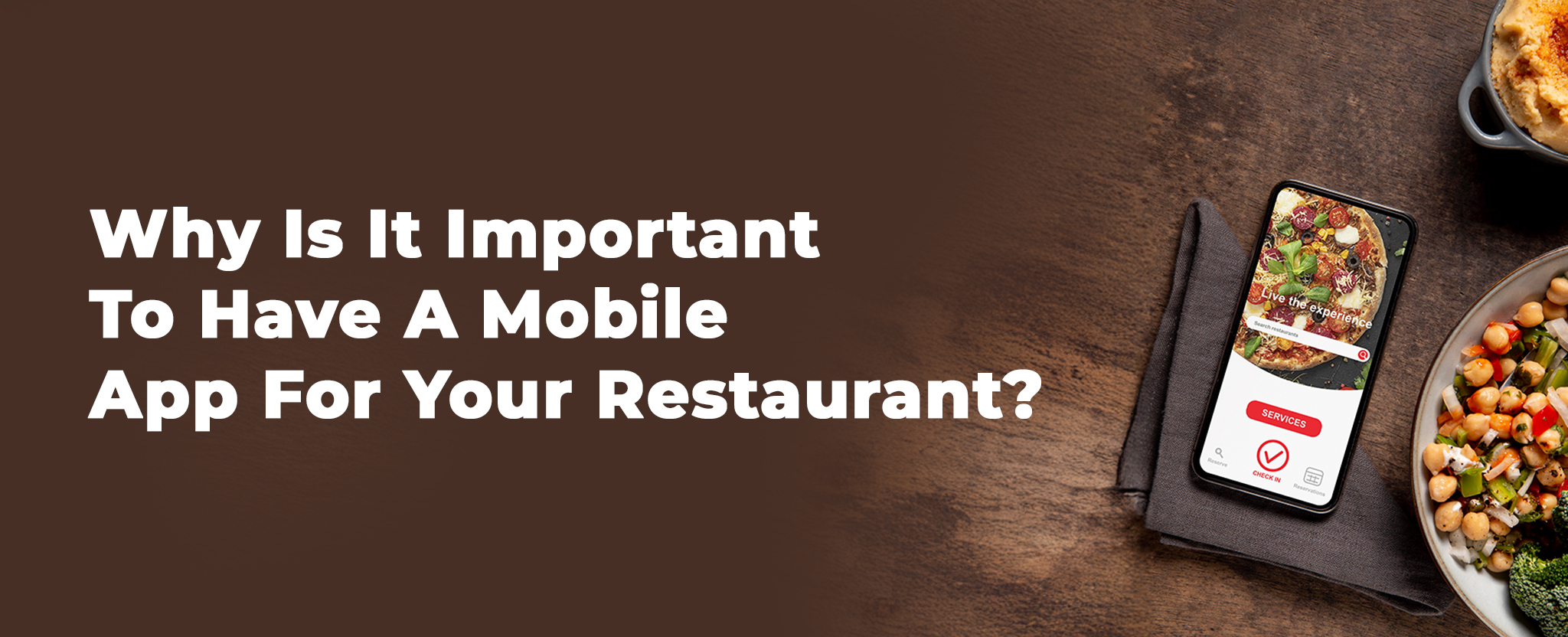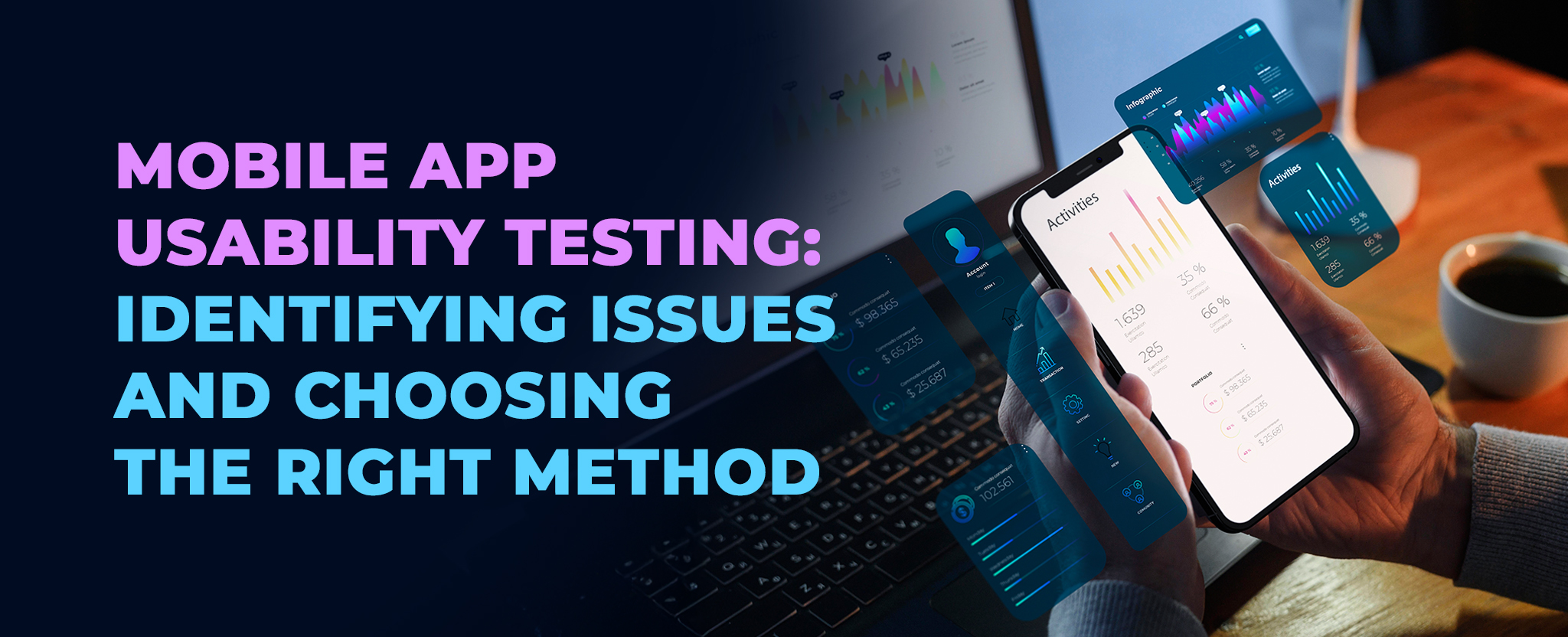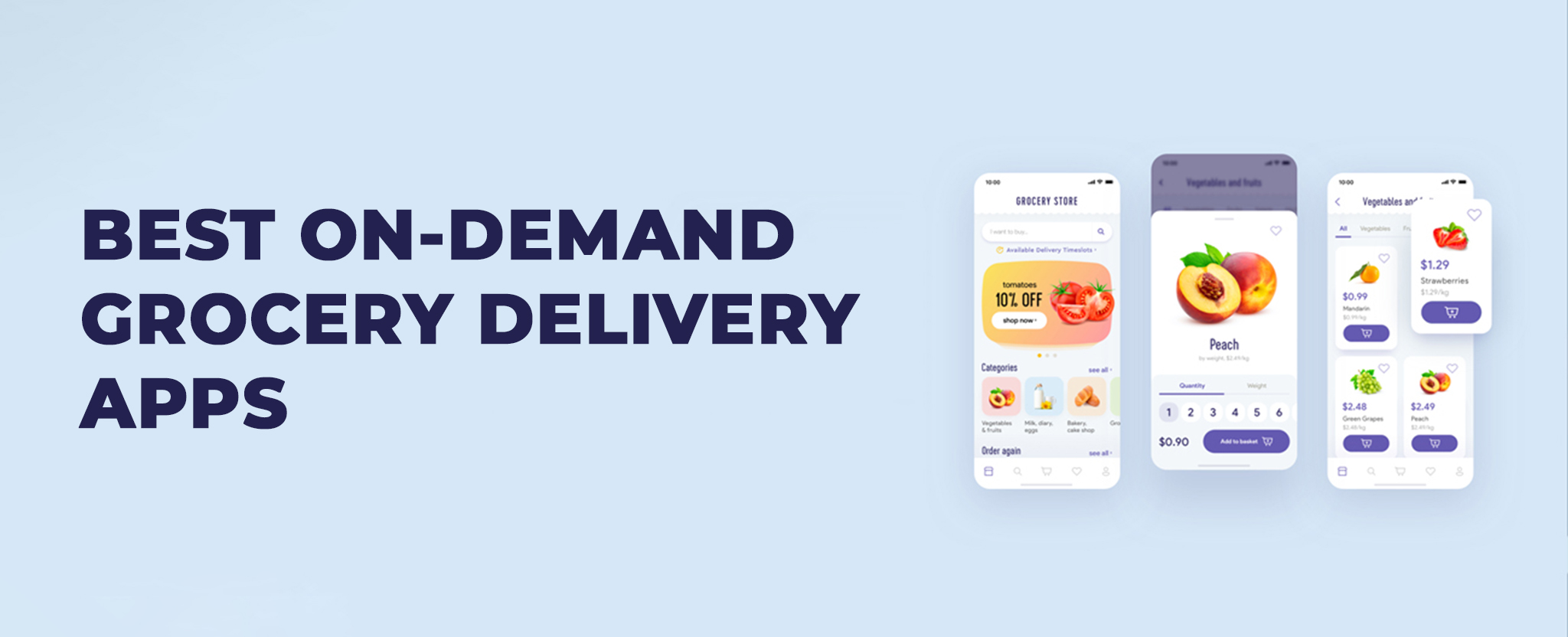Can You Patent A Mobile App? Here’s Everything You Need To Know
16 Mar 22 


Mobile app development requires many pre-steps. And the most important and initial one among them is building an app idea. If you are someone with incredible mobile app ideas and want to protect them so that it is not stolen or used by others, you could perhaps patent the ideas. Well, the question here is, how? This blog lets us dive deeper into the topic and learn about everything related to patenting your mobile application.
What Are Mobile App Patents?
Simply put, a patent is an intellectual property law that protects your app idea against illegal and non-consensual usage, prohibits other companies or individuals from changing or selling it, and ensures that no one falsely claims to get profit out of your idea.
Therefore, a mobile application has various interaction elements and can be patented. However, you cannot patent the app code as its law is categorized and covered under copyright. Instead, you could patent the way or procedure your app follows for performing specific tasks.
Why And When Should You File for a Patent?
Your app idea is a result of your creativity and unique thinking capabilities. If you were to not provide any legal security for your idea, other individuals or companies could easily make use of it without being questioned. Now, does that sound fair on your side?
To have an intellectual property right over your app idea, you must file for a patent. This official document gives you a right over your idea, allowing you to ask for compensation from any party that tries to violate current patent laws. Furthermore, you will be able to legally accuse every clone of your original app introduced before your app or even those in the development process. A patent will also enable you to prove the uniqueness and originality of your app idea and ensure that no party financially exploits it.
Coming to the ‘when’ part, it is best to file for a patent before disclosing vital details about your application. This is because the patent is considered the person who claims it first rather than the person who invented it. It also helps you analyze different app operations in various industries and provides you with ideas of other components that are qualified to get patented.
Steps To Patent A Mobile App
Exercise Patent Search
As you may already know, ‘prevention is better than cure. Rather than dealing with any unpredicted breaches in the future, it is always better to take a further step and ensure that everything is ideally and precisely done. Therefore, rather than personally doing your research, hire a professional who conducts a global search for apps similar to yours or those with the same features or functionalities. This may take a few extra expenditures, but it would help ensure that your patent has the maximum scope for approval.
File a Provisional Or Non-Provisional Patent Application
There are two types of patent applications that you can utilize- provisional and non-provisional. Under a provisional application, you can file without a formal patent claim, declaration, or even data disclosure statement. It also provides certain advantages- it allows you to use the term ‘Patent Pending’ on the app, considers 12 months for creating the MVP, and is less costly than non-provisional applications.
Under a non-provisional application, you can file without any claim created on the app made in the convention nation or with no app reference available in the procedure. It should be accompanied by a total claim and specifications, including a written description of the invention and a claim that legally defines it.
To decide the patent application type, you will have to consider how long you want to delay the patent text expenses and how quickly you want your patent to be approved.
While applying for a patent for your mobile app in the US might be your current focus, it’s crucial to remember that app development is a global venture. If you’re considering expanding or launching your app in Canada, familiarizing yourself with Canada’s patentability guidelines is essential. Understanding the unique aspects of Canadian patent law will ensure that your innovative mobile application remains protected across borders.
Submit Your Patent Application
This is the final step in the patent application process. After successfully performing the above steps and preparing the patent application, you must file it with the USPTO. It is a tedious procedure that demands a lot of documents.
What Are The Documents Required To Apply For A Mobile App Patent?
Some of the vital documents that you need at the time of submitting your application are as follows. You need to ensure that all the documents are prepared in detail beforehand so that you can quickly and easily complete the application process.
- Specification
- Declaration or Oath
- Data Disclosure Statement
- Entity Status Form
- Claims
- Application Data Sheet
- Drawings
- Patent Cooperation Treaty (Optional and for International Filings)
- Cover Sheet
- Fee Sheet
- Application to Make Special (Optional)
How Much Does It Cost To Patent An Mobile App?
The cost of patenting an app varies according to the type of application you apply for. You can refer to the USPTO listing to know more specifically about each cost. However, here are a few basic charges that you must pay while filing for a patent application.
- Elementary filing fee $70-$280+
- Patent search fee $150-$600
- Patent examination fee $180-$700
- 3.5 year maintenance fee $400-$1600
- 7.5 year maintenance fee $900-$3600
- 11.5 year maintenance fee $1850-$7000+
Also, a roughly average amount for a patent application could be somewhere between $2000-$5000 for provisional patent applications and between $10000-$15000 for non-provisional patent applications.
How Long Does It Take To Get Your Mobile App Patented?
Since applying for an app patent is a tedious and stressful job, more often than not, applications are rejected and resubmitted over and over again until it is fit for approval. This back and forth process can last up to 4 to 6 years, based on the circumstances of each application. Therefore, it is essential to ensure that your application is as precise and perfect as possible if you require faster approval.
What Are The Requirements To Qualify For A Patent?
There are three prominent requirements for an app to qualify for a patent, and they are the following.
There Must Be An Invention
The first and most important criterion for an app to qualify for patent is that it must be an invention. Rather than just an idea, it must have definable, prominent, and unique elements that make it an app developed like none before. The invention also means that it is newly made available to the market and has never been used to date.
Once you prove that your app idea is an invention, your app will quickly get patented, allowing you to prevent others from using your product and making a profit out of them.
The Invention Must Be Unique
The second requirement for an app to be valid for patenting is it must be unique and new. An invention requires creativity and innovation. Through your skills and unique thoughts, you must build an app idea that has not been used before and should have something positive and potentially different.
The whole concept is that you must claim the idea as your own, and for that, you must utilize your creativity and innovation to the greatest possible extent. If you were to copy an already known and available idea, it does not provide you with the capability to claim the idea. An invention must be unique, fresh, and raw.
The Invention Must Be Useful
No matter how creative and out-of-the-box your idea is unless it influences society positively, it cannot be considered. The newly invented idea must in some way do good for society as a whole and must in no way bring any harm. Just like how ecommerce websites provide convenience to users by allowing them to shop from within their homes and how communication apps like whatsapp connect people around the world without extra payments, your app idea must result in the sense of belongingness and friendliness.
If your app idea fulfills these three requirements, you can go ahead and apply for the patent so that your creativity and hard work are valued and not exploited by others.
The Alternatives To App Patents
Now that you know a little about app patents and the steps and requirements involved in the process, you must be wondering if there are alternatives that you can use to protect your app ideas. Well, the answer is yes. Here are a few considerable alternatives for app patents.
Copyright
Mobile app copyright is an IPR similar to a patent but has a few differences. It is a collection of right issues given to the inventor or author of any work, be it literary, artistic, educational, musical, or computer programs, which allows them to publish or reproduce their work, make derivatives, etc., irrespective of whether it is published or unpublished.
Unlike patents, copyright protects the expression of an idea rather than the idea itself. Therefore, you can copyright your app logo but not the app as a whole as it does not cover facts, ideas, systems, or methods of operation.
Trademark
While a patent prohibits others from making or selling the protected invention, a trademark protects words, phrases, symbols, logos, and other devices that are sources that identify the goods and services of the owner. Therefore, you can trademark your app logo so that no one else uses the same to confuse your users and profit from it.
NDA (Non-Disclosure Agreements)
NDA is a document signed by the entities you work with on your project. One such entity would be the mobile app development company you are working with. An NDA legally binds the parties to keep the ideas and technicalities confidential. This, in turn, protects the idea from being used by outsiders.
Top Patented Apps In 2022
Any company with patentable processes and features should apply for a patent. It would give them authority and specific sets of rights over them. With that being said, here are some of the famous companies that have patented their apps in various ways. These examples will let you understand how to identify and categorize patent-worthy parts of the app.
Recently, Google patented their improved ‘drag-and-drop’ feature usable in various mobile applications. They used the strategy of patenting a particular user-faced interface feature rather than the complete app to protect an invention that is more likely to be used by various other apps during the patent’s life.
This patent method shows us that we do not have to patent a complete app but rather a specific invention incorporated.
Zillow
Unlike Google, Zillow’s patent claims the entire app idea rather than just a feature of it. The patent covers it all, from the backend computing to displaying the produced panoramic view in GUI. This patent method secures protection for the entire application.
Similar to Google, Facebook also patented a part of the mobile application rather than the app as a whole. The patent covers a network architecture for implementing secure ID login to an application. Here, Facebook protects a backend feature that is utilizable in various applications but may never be noticed by an average consumer.
How To Know If Your App Idea Is Already Patented By Someone Else?
We have spoken about our unique app ideas and patents throughout this blog and secured them. But have you wondered if those unique ideas of yours are already patented by someone else? Now that is tricky. Therefore, to ensure that another party does not already patent your mobile app idea, you need to conduct a detailed study on every associated app idea that is either pending or marketed. You could access the preserved data in the operational database of your state or country to do the same. Also, you can analyze data related to different international patents through the IPC Catchword Index of WIPO.
6 Reasons Why You Should Not File For A Patent For Your App
Now that we have discussed all the varying reasons you should apply for a patent and how beneficial it is for your mobile app idea, let us look at some of the reasons you must not apply for a patent for your app. Here are some of the disadvantages or opposing sides of patenting your mobile application.
- Filing a patent as soon as you get a new idea or concept is a little too abrupt. You need to work out the idea and analyze its effects to fully understand the worth of that concept and decide if it requires patent protection.
- Applying for a patent requires you to make certain technical information about your invention public. However, keeping your invention a secret is a more effective way to keep your competitors at bay.
- Before you apply for a patent, you need to ask yourself why you want to protect this idea. You could either have good reasons to do so. However, if the idea involves the hype of people, the people’s interests will likely fade by the time the patent is approved. In that case, it is much better to use that money and time for more effective processes like marketing.
- Applying for a patent can be a time-consuming and lengthy process that takes four to six years to get approved. During this period, the market may change, or the technology may overtake your invention when your patent is approved.
- Patenting an app idea costs you a lot of money, whether you are successful or not. The application searches for existing patents and the patent attorney’s fees can all contribute to a significant amount of outlay. The profit potential should outweigh the amount of time, effort, and money spent on getting and maintaining a patent. If that is not the case, it is better to leave it unpatented.
- Taking action against an infringer can be pretty expensive, and therefore, you must be financially capable and prepared to defend your patent.
Final Thoughts
To wrap up, yes, you can patent your mobile application. However, patenting an app depends on your requirements and various other factors. For example, filing a patent can be crucial for a business that focuses on enterprise mobile app development but may not be as meaningful for other applications. With all the detailed information given above, it is now your turn to decide if you want to patent your idea or mobile app. If you believe it is required, we would recommend you seek a highly professional and experienced patent attorney to guide you through.
- Android Development3
- Artificial Intelligence27
- Classified App3
- Custom App Development2
- Digital Transformation11
- Doctor Appointment Booking App13
- Dropshipping1
- Ecommerce Apps38
- Education Apps2
- Fintech-Apps35
- Fitness App2
- Flutter3
- Flutter Apps19
- Food Delivery App5
- Grocery App Development1
- Grocery Apps3
- Health Care7
- IoT2
- Loyalty Programs9
- Matrimony Apps1
- Microsoft1
- Mobile App Maintenance2
- Mobile Apps120
- Product Engineering5
- Progressive Web Apps1
- Saas Application2
- Shopify7
- Software Development1
- Taxi Booking Apps7
- Truck Booking App5
- UI UX Design8
- Uncategorized4
- Web App Development1


















[…] can patent app by filing one or more patent applications with the Indian patent office corresponding to your […]
[…] can patent app by filing a patent application with the US Patent and Trademark Office (USPTO). Initially, you can […]